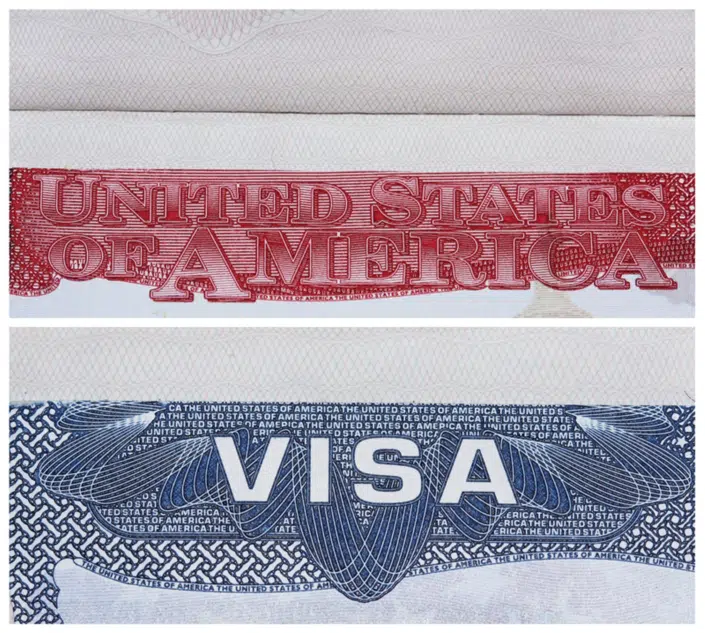Entendendo o visto E-2: Um caminho para o investimento e o crescimento econômico nos EUA.
Os investidores com visto E-2 são um grupo exclusivo de indivíduos ou empresas provenientes de países que compartilham tratados comerciais com os Estados Unidos. Seu objetivo é trazer inovação e crescimento econômico para os EUA, supervisionando uma empresa nova ou existente na qual tenham feito um investimento de capital significativo. O status de visto E-2 também está disponível para pessoas empregadas por um investidor ou empresa de tratado que ocupem um cargo executivo ou que tenham habilidades especializadas cruciais para o funcionamento da empresa. O critério principal é que o investidor ou empregador deve ter a nacionalidade do país do tratado, o que pode ser verificado por meio de um passaporte dessa nação.
Requisitos de investimento para o visto E-2
O investidor com visto E-2 deve garantir que seus fundos ou ativos estejam diretamente associados a ele. A documentação que rastreia a origem desses fundos é um requisito obrigatório. É importante observar que um investimento implica exposição a riscos. O investimento para o visto E-2 não é passivo, o que significa que o investimento apenas em propriedades ou imóveis, se não exigirem gerenciamento ativo e apenas se valorizarem com o tempo, não se qualificam como investimento para o tratado E-2. Além disso, o investidor precisa demonstrar que tem fontes alternativas de renda para sustentar a si mesmo e a sua família enquanto o investimento amadurece.
Exemplos de empresas adequadas para investimentos E-2 podem incluir:
- negócios de varejo
- empresas de distribuição
- restaurantes
- franquias
- empresas de manufatura
Esses tipos de negócios exigem gerenciamento e supervisão ativos, alinhados com a exigência do visto E-2 de um investimento ativo em que o investidor esteja ativamente envolvido na operação da empresa.
Solicitação do visto de investidor E-2
Depois que a solicitação de visto E-2 e os documentos de apoio estiverem devidamente preparados, eles serão enviados à Seção Consular dos EUA relevante. Após a aprovação, o visto é emitido e colocado no passaporte do solicitante e, se for o caso, nos passaportes de qualquer membro da família. O visto de um investidor E-2 pode permanecer válido indefinidamente, desde que o investimento seja mantido e o negócio não seja marginal. Em alguns casos, os investimentos com o visto E-2 podem ser adaptados para que o investidor e sua família possam solicitar um Visto de investimento EB-5.
Membros da família são elegíveis para o visto E-2
Os portadores do visto E-2 têm o direito de trazer seus familiares imediatos para os Estados Unidos. O termo "membros da família" refere-se especificamente ao cônjuge do portador do visto e a qualquer filho solteiro com menos de 21 anos de idade. É importante observar que esses familiares não precisam ter a mesma cidadania do país do tratado que o titular do visto E-2 principal. Entretanto, sua elegibilidade para permanecer nos EUA sob o status de tratado é condicional. Quando um filho completa 21 anos ou se casa, ele perde a elegibilidade para permanecer nos EUA sob o status de tratado E-2. Também deve ser mencionado que a permanência de cada membro da família nos EUA depende de sua própria solicitação de visto separada, que deve ser apresentada juntamente com a solicitação do solicitante E-2 principal.
Documentação necessária para o visto E-2
A obtenção de um investimento E-2 envolve uma série de documentos, como um plano de negócios bem estruturado, prova de fonte legal de recursos, evidência de investimento ativo e muito mais. Nosso escritório de advocacia está mais do que pronto para ajudá-lo a navegar por esse processo, oferecendo assistência na organização e preparação de sua documentação.
Aproveitando a experiência de um especialista em imigração para sua solicitação de visto E-2
A obtenção de um visto de investidor E-2 pode ser um empreendimento complexo que exige uma estratégia bem pensada, uma preparação meticulosa e um entendimento abrangente das leis e políticas de imigração. Um advogado de imigração experiente pode orientá-lo nesse processo complexo, fornecendo conselhos sobre considerações importantes, como a fonte e o valor do investimento, o tipo de empresa e a função do investidor na empresa.
Desde o estágio inicial de validação da fonte legal de fundos até a demonstração de um investimento substancial em uma empresa de boa-fé, seu advogado pode ajudar a preparar a documentação necessária e apresentar um caso persuasivo ao Consulado dos EUA. Ele também pode oferecer orientação estratégica sobre a manutenção do seu status E-2, como, por exemplo, garantir que a empresa permaneça ativa e não esteja apenas gerando uma renda mínima.
Se sua meta de longo prazo é garantir a residência permanente nos EUA, um advogado de imigração também pode aconselhar sobre a possibilidade de fazer a transição de um visto E-2 para um visto de investidor EB-5. Essa transição exige um planejamento cuidadoso, pois envolve compromissos adicionais, como investir o valor mínimo exigido e criar pelo menos 10 novos empregos em tempo integral.
Navegar pelo processo de solicitação do visto E-2 com a ajuda de um advogado de imigração experiente não apenas aumenta a probabilidade de uma solicitação bem-sucedida, mas também proporciona tranquilidade ao saber que seus objetivos de investimento e imigração estão sendo tratados por um especialista.
Se precisar de mais informações, não hesite em Entre em contato com nosso especialista em leis de imigração certificado pelo conselho.
Países qualificados para o visto E-2
Notas de rodapé específicas de país
- China (Taiwan) - De acordo com a Seção 6 da Lei de Relações de Taiwan, (TRA) Lei Pública 96-8, 93 Stat, 14, e Ordem Executiva 12143, 44 F.R. 37191, este acordo, que foi concluído com as autoridades de Taiwan antes de 01 de janeiro de 1979, é administrado numa base não governamental pelo Instituto Americano em Taiwan, uma corporação sem fins lucrativos do Distrito de Columbia, e não constitui nem o reconhecimento das autoridades de Taiwan nem a continuação de qualquer relação oficial com Taiwan.
- Repubblica Checa e República Eslovaca - O Tratado com a República Federal Tcheca e Eslovaca entrou em vigor em 19 de dezembro de 1992; entrou em vigor para a República Tcheca e a República Eslovaca como estados separados em 01 de janeiro de 1993.
- Dinamarca - O Tratado, que entrou em vigor em 30 de julho de 1961, não se aplica à Groenlândia.
- França - O Tratado, que entrou em vigor em 21 de dezembro de 1960, aplica-se aos departamentos da Martinica, Guadalupe, Guiana Francesa e Reunião.
- Japão - O Tratado, que entrou em vigor em 30 de outubro de 1953, foi tornado aplicável às Ilhas Bonin em 26 de junho de 1968, e às Ilhas Ryukyu em 15 de maio de 1972.
- Países Baixos - O Tratado, que entrou em vigor em 05 de dezembro de 1957, é aplicável a Aruba e às Antilhas Holandesas.
- Noruega - O Tratado que entrou em vigor em 13 de setembro de 1932, não se aplica a Svalbard (Spitzbergen e algumas ilhas menores).
- Espanha - O Tratado, que entrou em vigor em 14 de abril de 1903, é aplicável a todos os territórios.
- Suriname - O Tratado com a Holanda, que entrou em vigor em 05 de dezembro de 1957, foi tornado aplicável ao Suriname em 10 de fevereiro de 1963.
- Reino Unido - A Convenção, que entrou em vigor em 03 de julho de 1815, aplica-se somente ao território britânico na Europa (Ilhas Britânicas (exceto a República da Irlanda), Ilhas do Canal e Gibraltar) e aos "habitantes" de tal território. Este termo, como usado na Convenção, significa "aquele que reside real e permanentemente em um determinado lugar, e tem seu domicílio lá". Além disso, a fim de se qualificar para o status de negociante de tratado ou investidor de tratado sob este tratado, o estrangeiro deve ser um cidadão do Reino Unido. Indivíduos com a nacionalidade de membros do Commonwealth que não sejam do Reino Unido não se qualificam para o status de negociante de tratado ou investidor de tratado sob este tratado.
- Jugoslávia - A visão dos EUA é que a República Federal Socialista da Iugoslávia (RFJ) se dissolveu e que os sucessores que antes formavam a RFJ - Bósnia-Herzegóvina, Croácia, República da Macedônia, Eslovênia, Montenegro, Sérvia e Kosovo - continuam vinculados ao tratado em vigor com a RFJ e à época da dissolução.
- O visto E-3 é para cidadãos da Comunidade da Austrália que desejam entrar nos Estados Unidos para prestar serviços em uma "ocupação especializada". O termo "ocupação especializada" significa uma ocupação que exige a aplicação teórica e prática de um conjunto de conhecimentos altamente especializados e a obtenção de um diploma de bacharel ou superior na especialidade específica (ou equivalente) como requisito mínimo para o ingresso na ocupação nos Estados Unidos. A definição é a mesma que a da Lei de Imigração e Nacionalidade de uma ocupação de especialidade H-1B.
- Bolívia - Os bolivianos com investimentos qualificados em vigor nos Estados Unidos até 10 de junho de 2012 continuam com direito à classificação E-2 até 10 de junho de 2022. Os únicos nacionais da Bolívia (exceto aqueles qualificados para o status de derivados com base em uma relação familiar com um estrangeiro principal E-2) que podem se qualificar para o visto E-2 neste momento são os requerentes que estão vindo para os Estados Unidos para se engajar em atividades E-2 na promoção de investimentos cobertos estabelecidos ou adquiridos antes de 10 de junho de 2012.
- Os cidadãos equatorianos com investimentos qualificados nos Estados Unidos até 18 de maio de 2018 continuam a ter direito à classificação E-2 até 18 de maio de 2028. Os únicos cidadãos do Equador (além daqueles que se qualificam para o status de derivado com base em um relacionamento familiar com um estrangeiro principal E-2) que podem se qualificar para vistos E-2 no momento são os solicitantes que estão vindo para os Estados Unidos para se envolver em atividades E-2 em prol de investimentos cobertos estabelecidos ou adquiridos antes de 18 de maio de 2018.
- Israel: De acordo com um tratado de amizade, comércio e navegação entre os Estados Unidos e Israel, que entrou em vigor em 3 de abril de 1954, os cidadãos de Israel têm direito ao status E-1 para fins de negociante do tratado. Os cidadãos de Israel não têm direito à classificação E-2 para fins de investidor de acordo com esse tratado. A Lei Pública 112-130 (8 de junho de 2012) concede aos cidadãos de Israel o status E-2 para fins de investidor do tratado se o governo de Israel oferecer status de não imigrante semelhante aos cidadãos dos Estados Unidos. O Departamento confirmou que Israel oferece tratamento recíproco de investidor de tratado aos cidadãos dos EUA e que o visto E-2 pode ser emitido para cidadãos de Israel a partir de 1º de maio de 2019.
- Nova Zelândia: A Lei Pública 115-226, promulgada em 1º de agosto de 2018, concedeu aos cidadãos da Nova Zelândia os status E-1 e E-2 para fins de comerciante/ investidor de tratado se o governo da Nova Zelândia oferecer status de não imigrante semelhante aos cidadãos dos Estados Unidos. O Departamento confirmou que a Nova Zelândia oferece status semelhante de não imigrante para cidadãos dos EUA e que os vistos E podem ser emitidos para cidadãos da Nova Zelândia a partir de 10 de junho de 2019.











